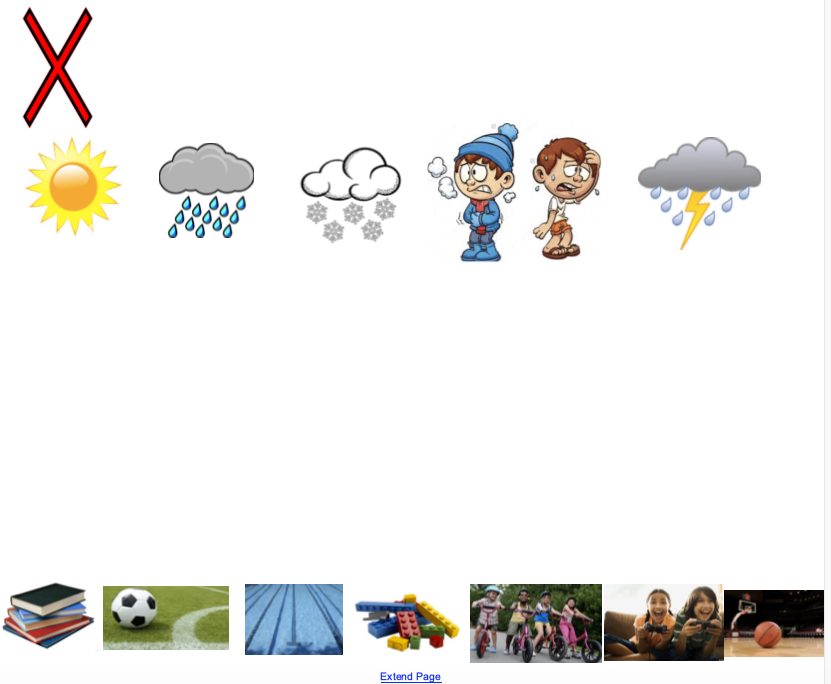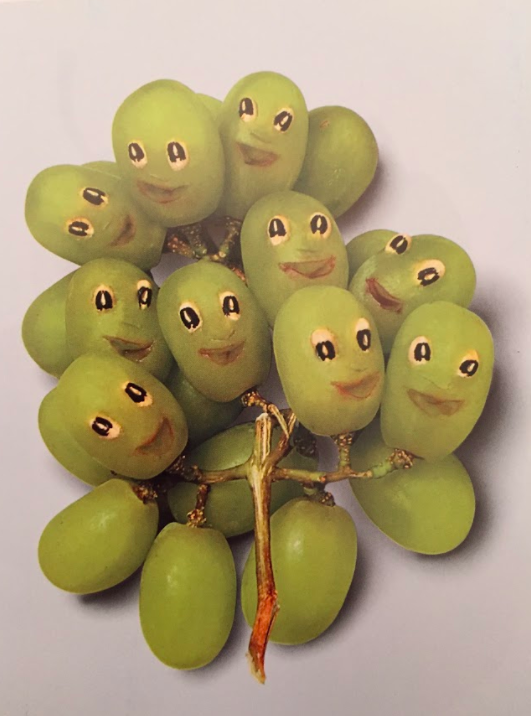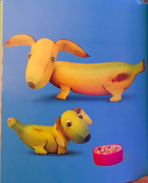 Thanks to my dearest friend Annabelle Williamson for the amazing MT Queen shirt! Thanks to my dearest friend Annabelle Williamson for the amazing MT Queen shirt! For those of you know me, you are well aware of my addiction to Movie Talk (AKA Video Chat, AKA Clip Chat). I'll be doing my MT session at MaFLA next week and NECFTL in February, and presented on it five times this past summer. FIVE. I am legitimately obsessed. Someone just posted a question to the iFLT/NTPRS/CI Teaching FB group about a good MT for French I. I believe that ANY MT can be adjusted to work for ANY level, but I wanted to take a moment to write about the year I based the entire content of my third grade program on four Simon's Cat videos: Fetch, The Box, Snow Business, and April Showers.
We started the year with a Card Talk, where students drew what they liked to do. This allowed us to talk about weather, times of year, people, all kinds of stuff! We spent a solid three or so weeks on this. Here are some of the activities we did on my SmartBoard with the information we gathered about students in the class. For the picture on the left, we dragged the pictures from the bottom next to the names of the students who said they liked that particular activity. (The screen was originally just the names and the picture at the bottom.) The second picture is a set of true/false questions I asked my students orally; they wrote theirs answers on individual white boards. When I showed the third, we talked about which weather is best for which activities; this is always great because of the discussions that arise organically. There are invariably kids who like to play baseball in the rain, and we talk about how it's dangerous to swim when it's storming. The last contains sentences for goofy paired Pictionary (animals that like to do different activities, the same ones that the kids drew for the Card Talk); one student in the pair closes their eyes, the other looks at the sentence, then I cover the sentence up and the "open-eyed" students draw what they read for their partners to guess.  We then examined some pictures of kids around the world with their favorite possessions. (Ooooh, culture!) This is such a rich set of photos for Picture Talk-it's so powerful and can get you milking ALL FIVE OF THE FIVE ACTFL C's!! (Teacher mic drop.) The conversations can be so rich, and doing things like Venn diagrams, descriptive paragraph composition, and, comparison charts can really get the kids thinking about cultural differences. (The one picture that's fascinating and scary at the same time is the Ukranian boy with his toy gun collection.)  Our first MT of the year was "Fetch." It doesn't connect 100% with our Card/Picture Talks, but it has a cat and a dog and a stick and throwing and it's just fun. Simple, basic, repetitive. That's the key to a good MT. After our first term ended, we worked with "The Box." This one is fantastic for prepositions. (BTW, it's also the video I use as a demo for when I present on MT. Someone in the group always has a cat, and we talk about how the cat may or may not like boxes. It's great.) Students make their own little paper boxes, and we play around with putting different manipulatives in them. (Confession-by the end of our work with the boxes, I did break out some Skittles for us to put in and under and beside and behind our little boxes. Life's short, right?!) Once the weather turned, I cued up "Snow Business." Both"Fetch" and "Snow Business" have great structures for gestures. Gestures are important for me as I work with younger kids and they really benefit from that physical/oral connection. A friend of mine once told me that everything in my classes revolves around people or animals throwing things, stuff breaking, things falling....What can I say, I know what I like and what works for my kinds. I mean, if it ain't broke....  There are a couple of moments in the year when I deviate a little from Simon's Cat. During the winter, to mix things up a little, we do our Chapin/Cochien unit, which is always a ton of fun. I tie things to animals as much as I can, because, well, who doesn't love to talk about animals! I find that this unit is really beneficial from a linguistic perspective. Asking students to split words into syllables is not always easy, especially in L2, and it's not something one would think of being an "important skill." But it really is a cool exercise, and cognitively beneficial, I believe. You can read about the unit in more detail here. In their ELA class, third graders study folk tales. In our third term, starting in March, we read Le Petit chaperon rouge (Little Red Riding Hood), which takes us all the way through May. I love this unit because it ties into what the students are studying in their other classes. It uses a familiar story, so their affective filters are low. I scaffold it such that by the end of our work with the book, they are able to retell the story to me as I use a doll house and small stuffies and figurines to act it out. For some reason I can't upload that video to YouTube, but you can watch it here. The very last activity is homework: students retell it to a parent with images from the book, no written text in front of them. It's a powerful exercise.
So there you go-a year with Simon's Cat! I hope this give you some ideas. What are some videos you think that could serve to be the cornerstone of a year's curriculum? Bises.
0 Comments
(You will find all of the resources mentioned in this post, in addition to others, here.) There are multiple Notebook files; please email me if you would like these files in PDF format. We are preparing for a massive dumping of snow tonight here in Vermont. I decided I should pass the time curled up with some hot chocolate, blogging about one of my favorite units I do with my six graders: snowmen! I had been doing one isolated snowman activity for a long time, but a couple of years ago I discovered some new things and from there it just, pun intended, snowballed! I can be a bit of a traditionalist, and I really like for my students to memorize and recite poetry. I think it’s a good exercise to help students make the connection between spoken and written French, and I believe it is important for students to become comfortable speaking in front of others from a young age. So for years my students have been memorizing the Jacques Prévert poem, « Chanson pour les enfants l’hiver. » We usually start working with it in January right after we come back from vacation. (Part two of this post, which I will write next week, will highlight the fantastic random connection between this poem and a popular French pop song from a few years ago I made back when students who are now college sophomores were in sixth grade. SO. MUCH FUN!!!)
I loved having not just one, but TWO fun MTs to do. They are very different, but complement each other well. So how happy was I? Super. MTs are my absolute favorite, and I was able to get so much mileage out of these. But then IT GOT BETTER. In February of that year, Mary Peters, a colleague of mine at the Richmond Middle School in Hanover, came up with a great Pictionary activity with some of the classic Calvin and Hobbes snowman cartoons. The teacher describe one of the cartoons, the student draw what they hear. They then see the sentences written that they had just heard orally, then make comparisons between what they drew and the actual Bill Waterman images. And if that weren't enough, my father sent me some fun snowman cartoons that we discussed in class! I have a lot of follow-up activities, both for each video individually and some activities that combine the two videos: worksheets, readings, sentences to cut up, and small printouts of the screenshots from both videos with which students can do a variety of activities. (Directions, in French, for those activities here.) This whole unit usually takes me from the first of the year to our February vacation. It’s very timely, and even if you do not live in a location that experiences tons of snow, I hope you can find something worthwhile here.
Have fun, stay warm, and let me know how you like these lessons! Bisous. And the winner is....
What a fun couple of weeks in sixth grade it has been! A HUGE shoutout to my friend Dustin Williamson, a French and Spanish teacher in Maine, who has created his second annual Noël Madness bracket. He has found eight holiday commercials in French, and in sixth grade we have spent the past two weeks working with these ads. Students vote on their favorites after each class (we watch two commercials per class), and then next week we will do some follow-up activities with the winners. It's modeled after "March Madness," so we will have a winner for the bracket before vacation! Check back in to see where things stand! If you're on Twitter, you can see what students around the country are saying about these commercials with the hashtag #NoelMadness Here's the note that my principal included in his newsletter to families last week: SEMI-FINALS (winners in yellow) Coca Cola vs. Bouygues Migros vs. Loto or PayPal
...you do Movie Talks featuring kids, dogs, and lemons!
And then.... You spend lots of time exploring images from books by Saxton Freymann, such as How Are You Peeling? and Fast Food. SOOOOO much fun!
Bisous. It was great to be able to chat about my favorite, Movie Talk, at today's TCI Maine lunch conversation. I would have loved to talk more, but time was limited, and there was so much going on! But as I promised, here are some of the things I mentioned.
Bises! |
AuthorAllison Litten, the 2019 VFLA TOY, teaches French at the Marion Cross School, a public PreK-6 school in Norwich, Vermont. This is her twenty-third year teaching, and twentieth at Marion Cross. Archives
May 2023
Categories
All
|

















 RSS Feed
RSS Feed
